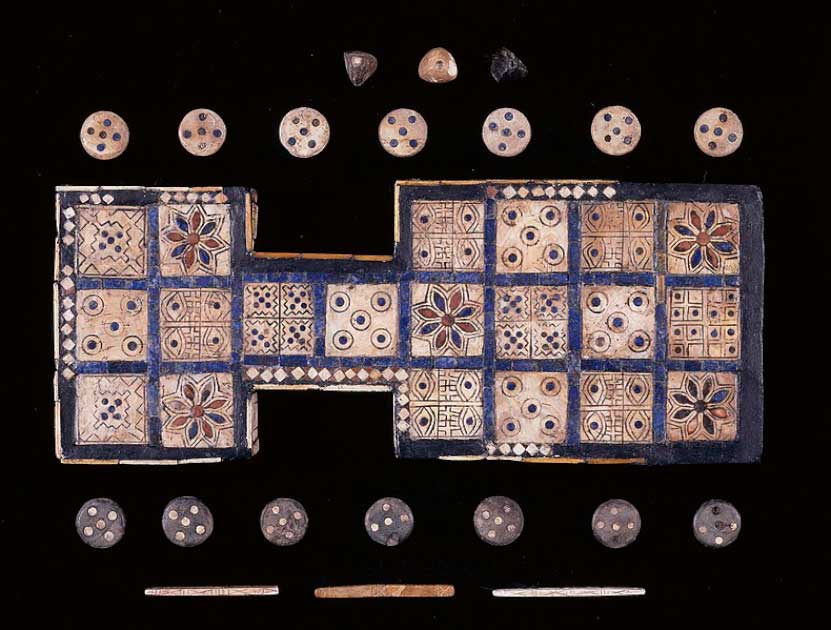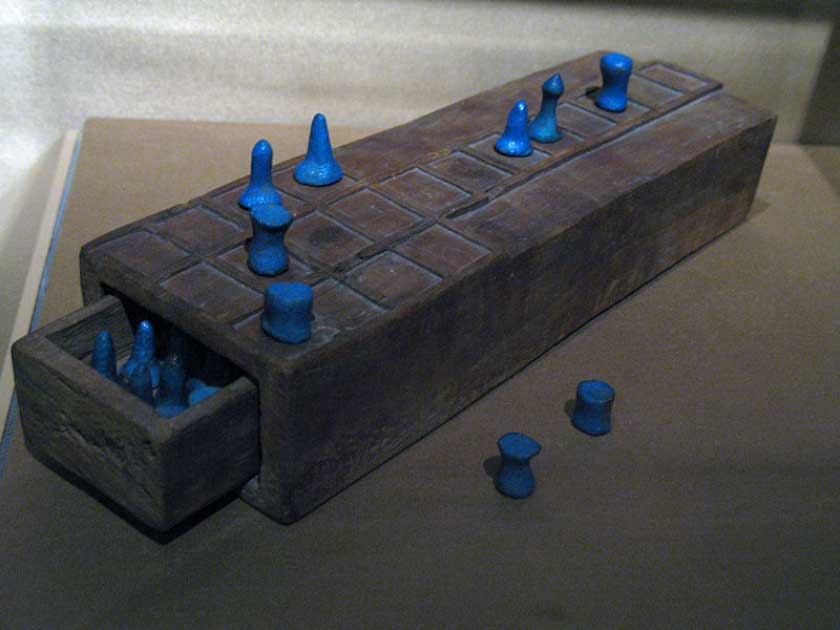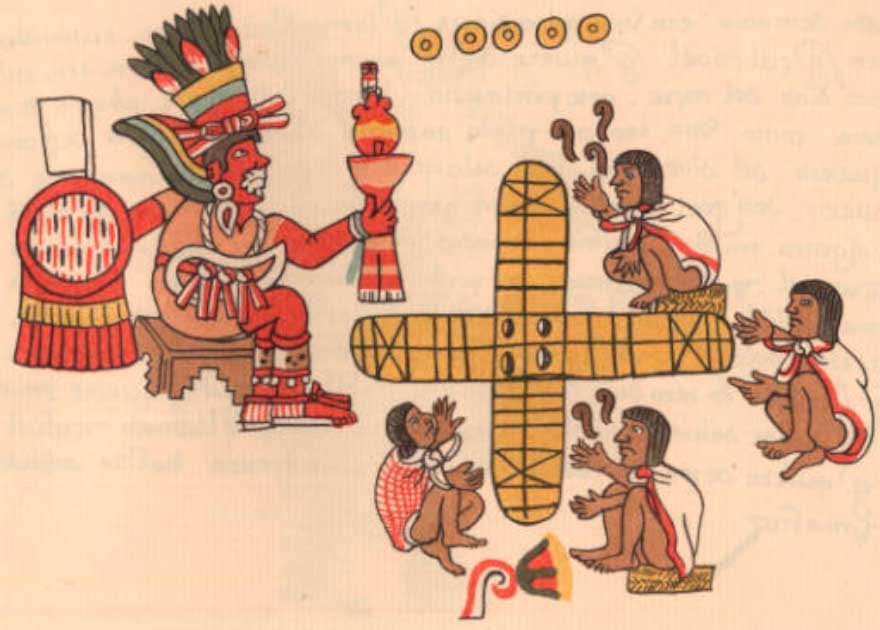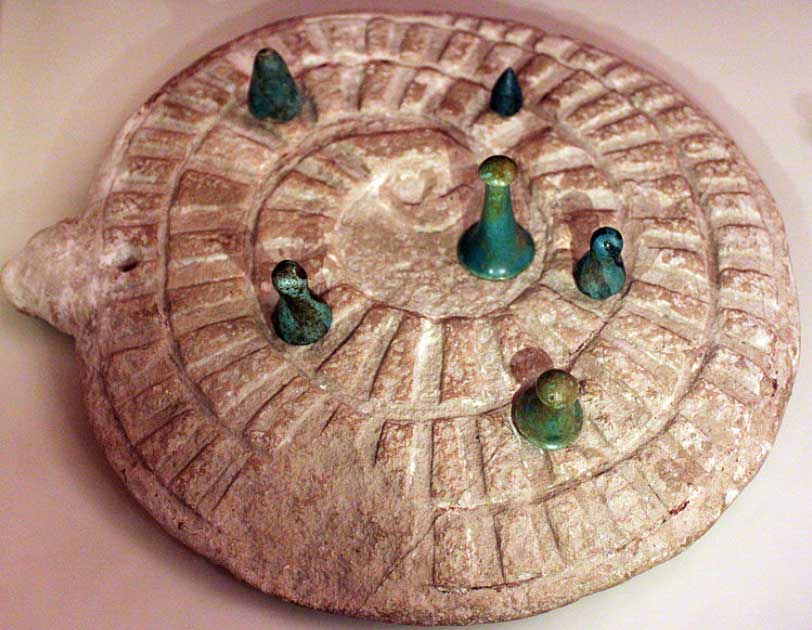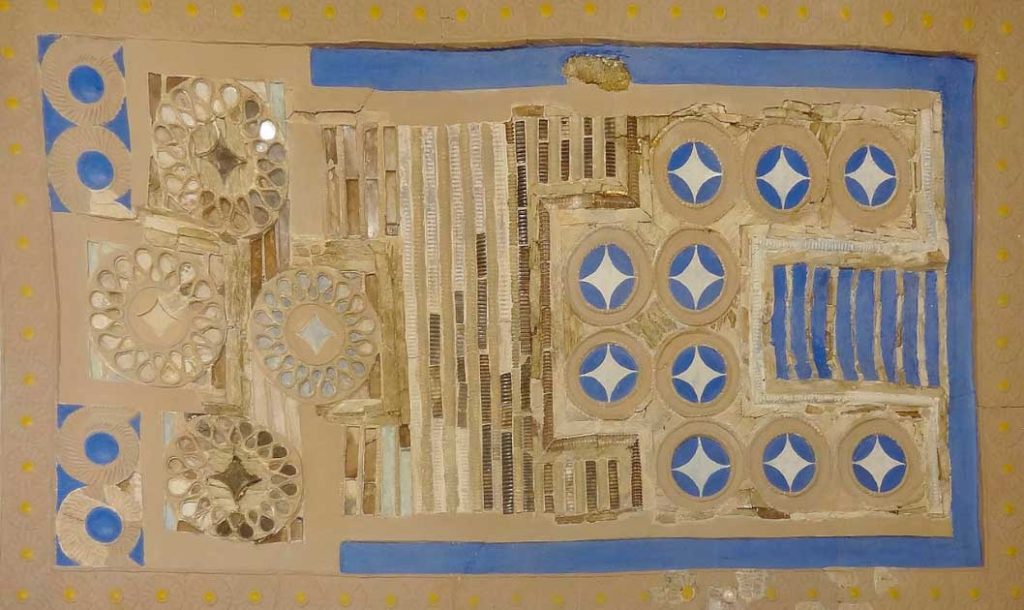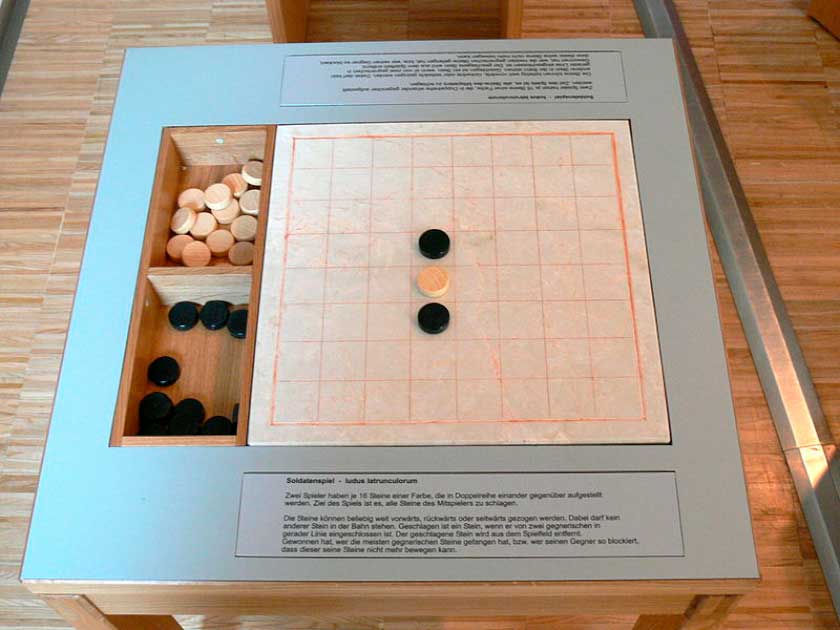Ask anyone to name a truly ancient board game off the top of their head and the chances are you will receive “chess” as your answer. This ubiquitous game however dates in a recognizable form from as late as the 15th century, although prototypical versions can be found for at least 900 years before that.
However it seems that the boardgame scene in the ancient world was much more packed than it would seem. From burials and tombs, from rubbish pits and ancient dwellings, evidence has emerged of many other games played throughout history, some lost to us now.
Here are six ancient boardgames from history.
1. The Royal Game of Ur
With this game we have something unusual even today: a boardgame with a complete set of instructions (although they were separated). However from the boards recovered it can be seen that this was a popular game in ancient Mesopotamia.
Dating from around 2600 BC the game is essentially a two player “race” along partially shared course of 20 squares. The game was considered of spiritual significance, with a player’s fortunes directly linked to their luck in the game.
The Game of Ur was very popular across the ancient middle east, with boards being found from Iraq to Crete. A similar board was even found in the tomb of Tutankhamun, suggesting the pharaoh also liked to play (British Museum / CC BY-SA 4.0)
2. Senet
If it’s an Egyptian game you are looking for however, look no further than Senet. Partial boards of this game of 30 squares have been found as far back as the First Dynasty around 3100 BC.
The rules have sadly been lost for this one (it was ever the way with boardgames) but some of them can be pieced back together. Each player has (at least) five pawns, and depictions of Senet in Egyptian tombs suggest that it is a strategic game, perhaps with elements of area control.
Egyptian de with her neighbors introduced Senet to the Levant, with copies of the game being found particularly on the island of Cyprus. Senet was played for thousands of years, and it is possible that it was a gaming system with changing rules rather than a boardgame in and of itself (Anagoria / CC BY 3.0)
3. Patolli
Millennia later and an ocean away, the Pre-Columbian civilizations were playing a game called Patolli. Started by the Mesoamericans who founded Teotihuacan and adopted by everybody from the Toltecs to the Aztecs and the Maya.
The focus here was not on the gameplay, which was somewhat straightforward as players race their tokens around a board. Instead the main aspect of the game which appealed was gambling, with payers betting possessions on who would win.
Playing this game was not done in a whim and often the stakes would be very high, with players competing to win possessions, property or even their freedom. Before starting each game, the Mesoamerican god of games Macuilxochitl would be invoked: he is depicted above, adjudicating (Berkeley University of California / Public Domain)
4. Mehen
Another ancient Egyptian game, this one dates from 3000 BC and only lasted for about 700 years. Again this game was exported to Cyprus: it seemed that ancient Cypriots couldn’t get enough of gaming, although building everything out of stone certainly helped their boardgames to last.
The gameboard is circular, representing a coiled snake, and is divided into spaces. Pieces apparently moved along this path, although the number of spaces varies from board to board which suggested the total is not important.
The game is very similar to a north African game called Hyena Chase, which may be derived from the Egyptian version. Both the African and Cypriot version lasted much longer than the game was played in Egypt: they were probably all playing Senet instead (Egyptian Museum of Berlin / CC BY 3.0)
5. The Knossos Board Game
All of these games may be impressively old, but they are a simple as Snakes and Ladders. For complexity (or confusion), one needs to travel to Knossos, capital of the mysterious Minoan civilization.
There, found to the northeast of the great palace in an area known as the “corridor of the zatrikion” a detailed game board was found, dated to between 1700 and 1500 BC. Made of precious materials and obviously valuable, the board has multiple different spaces, apparently divided into zones, with cone shaped ivory carvings for playing pieces.
Sadly, aside from four pieces and the board, nothing survives to help us understand this game. Its complexities and nuance, and indeed anything about how to play at all, is lost forever (Olaf Tausch / CC BY 3.0)
6. Ludus Latrunculorum
Popular in the Roman Republic and dated to at least the 2nd century BC this game was known as “the game of soldiers” and was apparently played between two players. Colored pieces were placed on a grid of squares in what appears to be a game of military tactics.
It is possible that the game is based on an even earlier Greek variant which dates back to Homer’s time and is mentioned by Plato. From ancient references it seems that the game might be a variant on the modern Othello, or Go, where players capture their opponent’s pieces by trapping it between two of their own.
Ovid wrote a guide on how to win, and the Roman poet Martial wrote of the game also. However the instructions have been lost and the game as played cannot be confirmed to be the same game the Romans played (Wolfgang Sauber / CC BY-SA 3.0)
Top Image: Queen Nefertari playing the boardgame Senet. Source: Nina Davies / Public Domain.
By Joseph Green
